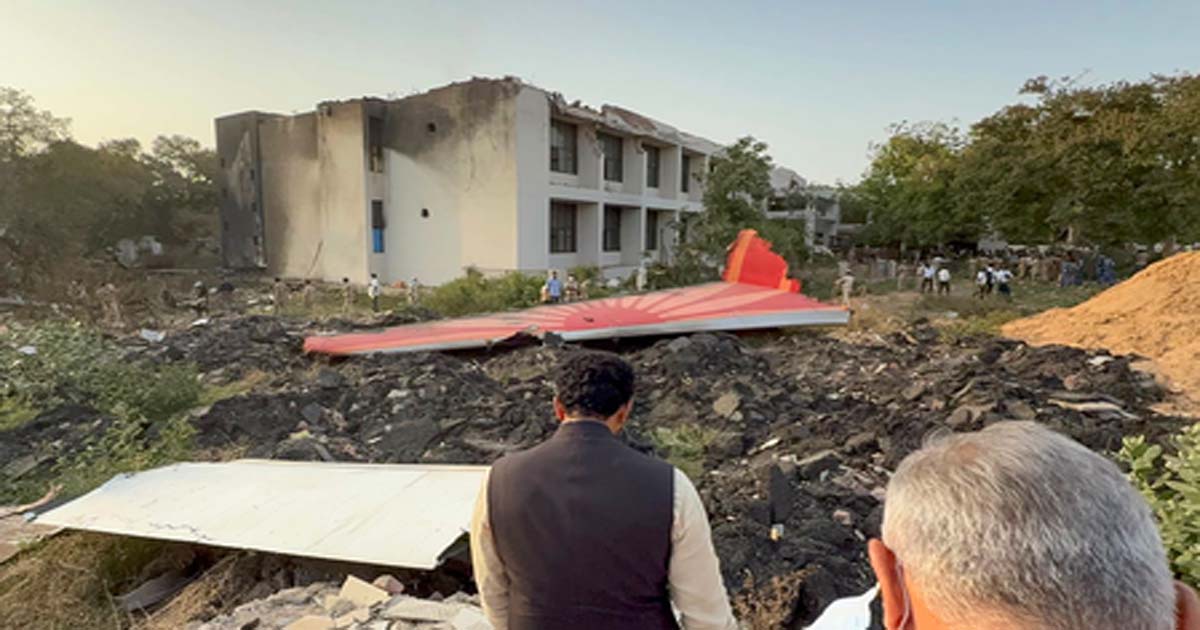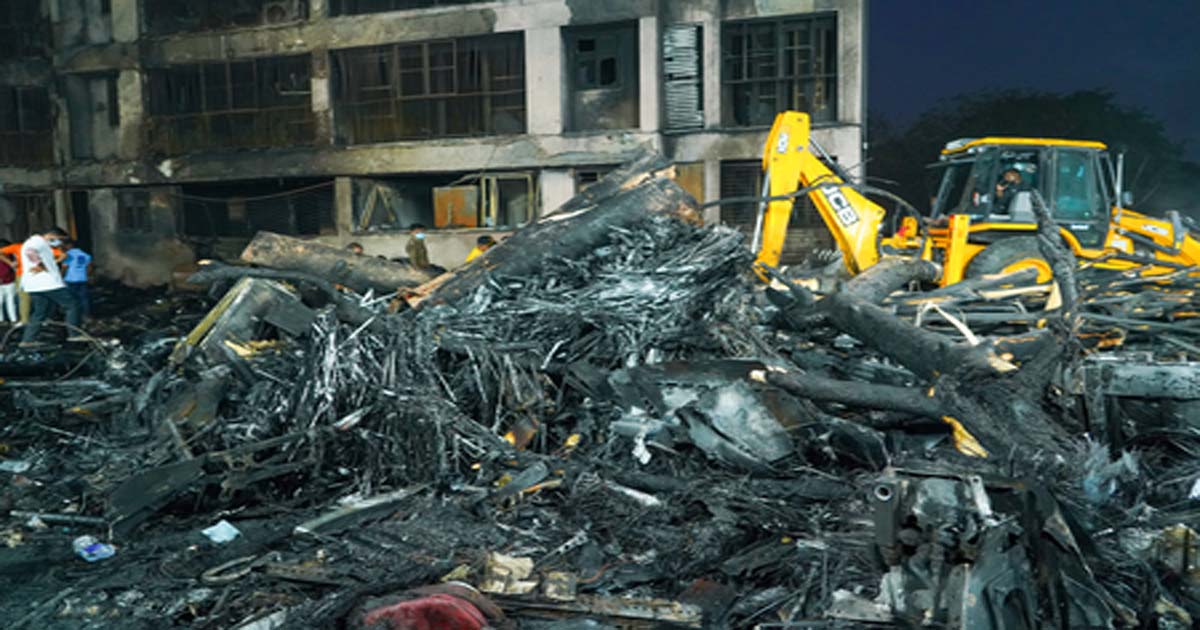disaster
Telangana tunnel rescue operation to be intensified with new plan of action, no sign of trapped workers

Hyderabad, Feb 26: The operation to rescue eight persons trapped in the partially-collapsed Srisailam Left Bank Canal (SLBC) tunnel in Telangana’s Nagarkurnool district will be intensified with state Irrigation Minister N. Uttam Kumar Reddy expressing the hope that it will be completed in two days.
He told media that the rescue efforts, which entered the fifth day on Wednesday, would be speeded up. Rescue teams will now be moving forward with a concrete plan of action to reach the accident site through the silt.
At the review meeting the minister had with officers of various agencies and experts involved in the rescue operation, it was decided to go for full-fledged dewatering and desilting.
The review meeting decided to completely remove the silt. The Army, the Navy, the National Disaster Response Force and other rescue personnel will execute the plan without risking the lives of the workers. The help of rat miners will also be taken.
The minister said that experts in the construction of tunnels in border areas and those who participated in rescue operations after similar tunnel accidents in other parts of the country are being taken for the rescue operation.
“Best experts in the country and serving and retired Army officers were invited. They went into the tunnel and came out after assessing the situation,” said the minister.
The rescue teams are also taking the suggestions of tunnel experts from other countries to move forward.
Uttam Kumar Reddy said that gas cutters will be used to remove parts of the Tunnel Boring Machine (TBM) which was damaged after a portion of the roof collapsed on February 22.
Earlier, a team of rescue workers from different agencies finally succeeded in crossing the last 40-metre stretch and returned but there was no word about the fate of the eight persons.
Earlier, tunnel experts from the Border Security Force (BSF) were roped in as part of the efforts to reach the head portion of the TBM.
At an earlier review meeting with Telangana ministers Uttam Kumar Reddy and Komatireddy Venkat Reddy, top officials of the agencies involved in the rescue mission informed that efforts were underway to remove the slush to reach the last 40 metres.
With this stretch filled with mud and debris and water seepage continuing, rescue workers had not made any headway for more than 24 hours.
A team of rat miners also went inside the tunnel to assess the situation. Their representative told the media that the TBM was not seen and feared that it could be buried under the mud.
Rescue teams of the NDRF, the Army, the Navy and other agencies have not been able to advance further due to 7-9 metre high mud while the continuous seepage of water has made the entire operation risky for the rescue workers.
On a request from Telangana, the National Disaster Management Authority has requested the National Remote Sensing Centre and the Geological Survey of India to conduct surface and sub-surface assessment of the incident site. This assessment is needed for the safety of the teams carrying out rescue operations.
Roping in experts from various agencies across the country and deployment of advanced equipment have not helped in what is believed to be the most difficult tunnel rescue operation in India.
The accident occurred 14 km inside the tunnel. While the rescue teams had already reached 13.5 km, they could not advance further for the last two days due to mud, the debris of TBM, and seepage of water. The divers of the Navy’s special forces unit Marcos were also unable to negotiate the slush.
Rescue workers say more soil is falling from fresh cavities at the exact spot of the tunnel collapse, adding to mud. As the slush is more than 70 per cent, the Navy divers were unable to go through it.
With more than 100 hours after the accident, the chances of survival of the trapped men are stated to be remote.
Meanwhile, Jaypee Group founder Jaiprakash Gaur visited the tunnel on Wednesday and said they were making their best efforts to rescue to trapped men. Jaypee is the contracting firm for the SLBC project.
Gaur said after completing the rescue operation, the company would resume the work to execute the project. He told media persons that they have encountered such incidents during tunnel works. He said this sixth or seventh accident in his life.
disaster
53-Year-Old Thane Resident Duped Of ₹39 Lakh In Cryptocurrency Investment Scam

Mumbai: A 53-year-old resident of Thane recently fell prey to scammers and lost Rs 39 lakh in a cryptocurrency investment fraud.
The scammers promised lucrative returns on trading and induced him to register on a bogus trading website and transfer money in over a dozen transactions.
The case dates back to June 26 last year, when he received a phone call from a person sharing information about the trading website, promising withdrawal of earnings by the end of every month.
Another scammer posed as a fund manager, inducing the man to invest. He could see his earnings on the website from June 26 till December 3, but when he asked for his returns, the scammers started giving evasive replies.
disaster
Air India plane crash: 144 victims identified by DNA tests, recovery efforts intensify

Ahmedabad, June 17: Four days after the devastating crash of Air India flight AI-171 en route from Ahmedabad to London, authorities have confirmed that 144 DNA samples have been successfully matched as of noon Tuesday, according to Gujarat Minister of State for Home, Harsh Sanghavi.
The identification process is being led by a combined team from the State Forensic Science Laboratory (FSL) and the National Forensic Sciences University, working around the clock to bring clarity to grieving families.
“This is a highly sensitive and emotional task. Every match is not just a technical confirmation, but a step toward giving closure to families waiting in anguish,” an official from the forensic unit said.
Emergency response teams remain stationed at the crash site in Meghaninagar, where investigators continue to recover personal belongings and body fragments amidst the wreckage.
Authorities have stated that all efforts are being made to ensure the dignity of the deceased and transparency in communication with the victims’ relatives.
Tata Group, which re-acquired Air India in 2022, has announced an ex gratia payment of Rs one crore to the families of each of the deceased from the AI‑171 crash near Ahmedabad. In addition, Air India has immediately released an interim relief payout of Rs 25 lakh per family — and to the lone survivor — to cover urgent needs.
The group will also cover all medical expenses for the injured and pledged financial support for rebuilding a damaged hostel at BJ Medical College. Chairman N. Chandrasekaran described it as “one of the darkest days in the Tata Group’s history.”
As of June 17, rescue and recovery efforts at the Ahmedabad crash site of Air India flight AI-171 remain intense and deeply coordinated. Over 300 firefighters, supported by 60 fire vehicles and 20 water bowsers from Ahmedabad, Gandhinagar, Vadodara, ONGC, and other nearby agencies, continue to clear debris and extinguish smouldering wreckage.
On the ground, three NDRF teams, 150 CRPF officers, Indian Army personnel, and teams from the CISF, BSF, and Western Railway Disaster Management are conducting systematic searches for remains and missing belongings.
Specialised sniffer dogs are aiding in the recovery of human remains, while Ahmedabad Police, responding to disturbing reports, have deployed animal rescue teams to safely relocate stray dogs scavenging at the crash site.
disaster
Ahmedabad plane crash: Probe intensifies after 2nd black box recovered

Ahmedabad, June 16: After the second black box, which is a critical component in determining the cause of the crash, was recovered, the investigators have intensified the probe in the Air India crash case.
The Cockpit Voice Recorder (CVR), commonly referred to as the second black box, was retrieved from the cockpit section of the wreckage.
This comes days after the Flight Data Recorder (FDR) was recovered from the tail end of the aircraft. The Cockpit Voice Recorder (CVR) captures all audio inside the cockpit, including conversations between pilots, radio transmissions, alarm sounds, and any background noise in the final moments before a crash.
It is a crucial tool for investigators, as it helps reconstruct the crew’s decision-making, identify possible human errors or mechanical warnings, and determine the sequence of events that led to an aviation incident.
Officials from the Aircraft Accident Investigation Bureau (AAIB) confirmed the findings, noting that both devices are in the process of being analysed. The CVR is expected to provide crucial insights into the final moments of the flight, including pilot communication and cockpit sounds, which may help investigators piece together the chain of events leading up to the tragedy.
The recovery was also acknowledged by P.K. Mishra, Principal Secretary to Prime Minister Narendra Modi, who visited the crash site on Sunday. During his visit, he reviewed ongoing investigation efforts and later went to the Civil Hospital, where injured passengers and local residents are being treated.
The death toll from the catastrophic Air India crash in Meghaninagar has risen to 270, officials have said. Among the deceased are 241 passengers who were on board the ill-fated flight, as well as several others who were present in nearby hostels, mess halls, and the surrounding residential area when the aircraft went down.
Meanwhile, the Gujarat government has declared a one-day state mourning on Monday in the state as a mark of respect to former Chief Minister Vijay Rupani, who lost his life in the Air India plane crash in Ahmedabad on June 12. All official functions and celebrations will remain suspended during the mourning period, and the national flag will be flown at half-mast across government buildings.
-

 Crime3 years ago
Crime3 years agoClass 10 student jumps to death in Jaipur
-

 Maharashtra1 year ago
Maharashtra1 year agoMumbai Local Train Update: Central Railway’s New Timetable Comes Into Effect; Check Full List Of Revised Timings & Stations
-

 Maharashtra1 year ago
Maharashtra1 year agoMumbai To Go Toll-Free Tonight! Maharashtra Govt Announces Complete Toll Waiver For Light Motor Vehicles At All 5 Entry Points Of City
-

 Maharashtra1 year ago
Maharashtra1 year agoFalse photo of Imtiaz Jaleel’s rally, exposing the fooling conspiracy
-

 National News1 year ago
National News1 year agoMinistry of Railways rolls out Special Drive 4.0 with focus on digitisation, cleanliness, inclusiveness and grievance redressal
-

 Maharashtra1 year ago
Maharashtra1 year agoMaharashtra Elections 2024: Mumbai Metro & BEST Services Extended Till Midnight On Voting Day
-

 National News1 year ago
National News1 year agoJ&K: 4 Jawans Killed, 28 Injured After Bus Carrying BSF Personnel For Poll Duty Falls Into Gorge In Budgam; Terrifying Visuals Surface
-

 Crime1 year ago
Crime1 year agoBaba Siddique Murder: Mumbai Police Unable To Get Lawrence Bishnoi Custody Due To Home Ministry Order, Says Report












